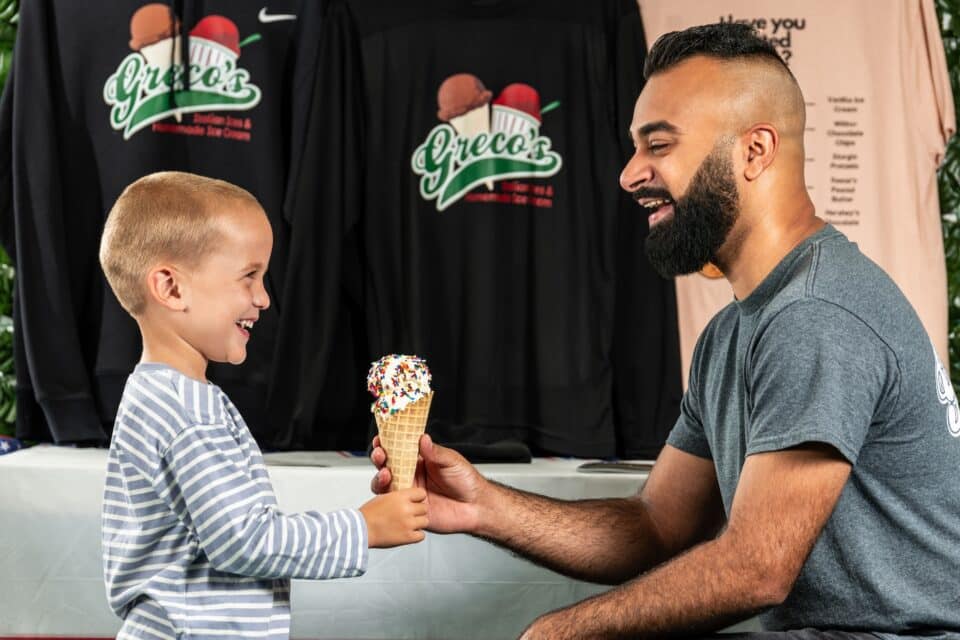This feature is brought to you by Chester County Hospital, which offers so much more than medical services and treatments. Explore its extensive community wellness and education resources, such as screenings, educational classes, Weight Matters, an eight-week weight loss program, nutrition counseling and more.
There is a lot of candy around during Halloween season. A lot. Even if you don’t have a sweet tooth, it can be hard to keep sugar consumption in check throughout October and early November.
What’s the best way to handle this? Avoid sugar at all costs? Indulge occasionally? And what about your kids? Even if you try to monitor their sugar intake, you can’t be at their side during all of the holiday parties and trick-or-treat festivities. How do we teach our kids how to have a healthy relationship with sugar?
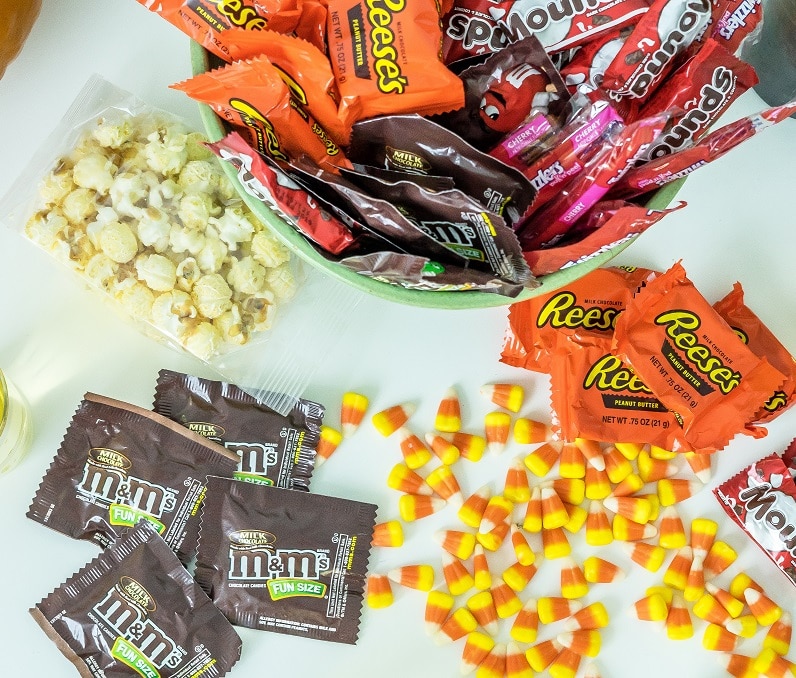
These are big questions which extend way beyond Halloween, so we wanted input from an expert: Kimberly Knipe, MBA, R.D., LDN, is a Chester County Hospital registered dietitian and coordinator of Community Nutrition and Outreach. She has a lot of experience helping families navigate food choices any time of the year. Recently, Knipe fielded a few of our questions about Halloween and candy and gave us some really good info to move into the holiday season with!
PA Eats: What’s a good place to start when it comes to talking to kids about setting boundaries around Halloween candy?
Kimberly Knipe: Sure, Halloween means a bucket or pillowcase full of candy, but it’s also about choosing and/or making a fun costume, picking pumpkins and apples, carving jack o’lanterns, and maybe going to a corn maze or a hayride. Talk with your family about all the fun, seasonal things that happen at this time of year, and plan for some of them.
Now, let’s talk about Halloween night: Make it clear ahead of time that the family will be eating an early, healthy dinner – this will help prevent crankiness and gorging on candy out of hunger and low blood sugar. Also, make sure children stay hydrated throughout the evening. Some costumes will make little goblins sweat, even if the weather is chilly.
PA Eats: Is any amount of candy okay at Halloween? If so, what quantity you suggest for kids?
Kimberly Knipe: As adults and parents, it’s up to us to put candy in its place. It’s a sugary treat, sure, but it’s just food. There is nothing magical about it and we should try not to associate emotions with it. That means, don’t use candy as a reward, a punishment or bribe. This can help prevent disordered eating patterns in the future.
Again, planning ahead can prevent some meltdowns on trick-or-treat night. Decide how long trick-or-treating will last, or how many houses you’ll go to. Compromise on how many pieces of candy each child might choose to have that night (and remind them not to eat anything until an adult has checked their stash). Take the child’s age and size into consideration – 10 fun size candies might be a little too much for small tummies, for instance. Also talk about how much they can choose each day after Halloween. And maybe even put a limit on how many days after Halloween the candy will be available before it gets donated or tossed.
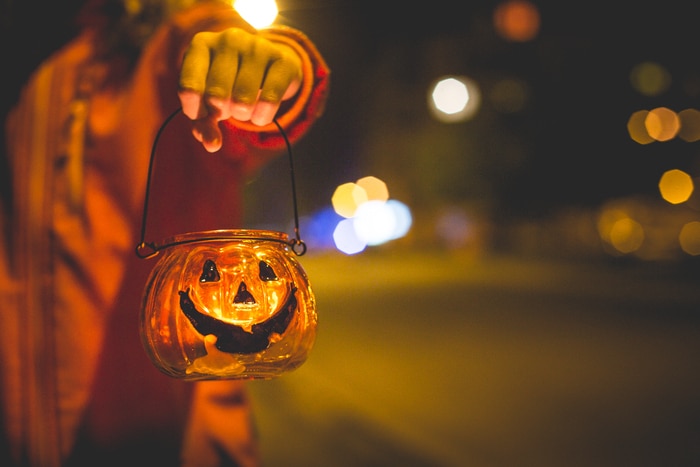
What are some ways we can model moderation for our kids?
Rather than complete restriction or gluttony, a small piece of candy once in a while, without making a huge deal about it, shows your kids that sugary treats can be enjoyed in the context of a healthy eating pattern. Talk about the fact that candy is fun and tasty, but too much sugary foods, like candy, is not good for our bodies. The extra sugar can give us cavities, upset our stomachs, keep us from eating the healthful foods that help us grow and stay healthy, and prevent a good night’s sleep.
Talk to your kids about donating extra candy. For instance, local dentist Dr. Ronald Briglia will give children (up to age 14) a dollar for each pound of candy (up to 5 pounds) they turn in! (See here for more details.)
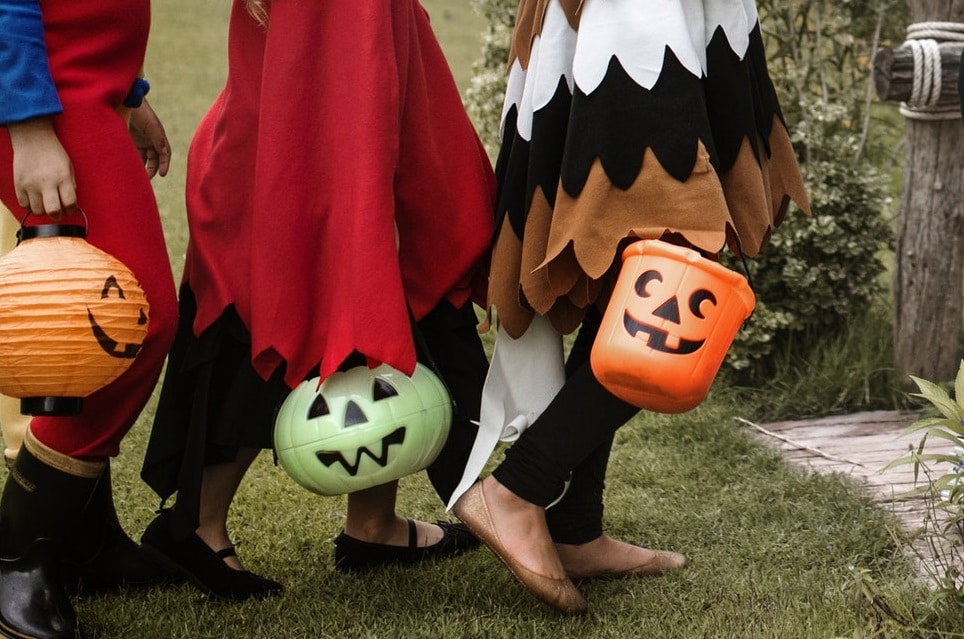
Talk us through the main concerns when candy is so readily available for this holiday.
We all know that sugary foods can promote cavities in our teeth. Encourage children to brush and floss after enjoying their Halloween candy. Not only will it clean their pearly whites, but that fresh feeling is a deterrent for eating more chocolate. By the way, that trick can help adults who want to control their cravings too!
And sugar has calories but no nutritional value. We want to limit the amount of treats so weight gain doesn’t become an issue. But limiting treats can also help encourage kids (and parents) to eat nutritious food when they are hungry. Foods like sweet fruit and crunchy veggies have a small amount of calories for a big nutrition pay off. And foods with protein are really important for little witches, superheroes and vampires. It keeps their immune systems humming, helps repair cuts and scrapes, promotes healthy growth, and keeps them full and satisfied. So, encourage nuts, beans, dairy, lean meat, fish and eggs.
Speaking of having candy readily available, try not to have it readily available! If you must buy your Halloween treats long before Halloween night, keep it closed and in a bag and in another room. After Halloween is over, find a storage spot that is out of sight. Perhaps it can go in an opaque container in a cupboard. Don’t leave it out in an open bowl on the kitchen counter. Out of sight, out of mind! Instead, encourage your family to eat healthful foods like fruits, vegetables and nuts by placing them out in an open container on the kitchen counter.
What are some healthier alternatives for adults and children?
If you’re hosting a Halloween party, you have more control over what goes in the treats that are served. In most recipes for baked goods, whole wheat flour can be substituted for half the all-purpose flour called for, and pureed pumpkin or applesauce for half the butter or oil. Cut the sugar by a third, and no one will even notice. Serve flavored water or 100% juice instead of soda. Consider serving Halloween-themed healthful snacks. For instance, carve bell peppers into jack o’lanterns, and fill with raw veggies and a bit of ranch dip made with Greek yogurt. Set out apple slices, chunks of pineapple, strawberries and kiwi with vanilla yogurt mixed with cinnamon.
For trick-or-treating, consider handing out bags of popcorn or pretzels. Another idea is to give out toys or gifts instead of food. A 2004 research study showed that children aged 3 to 14 are just as likely to choose toys as candy when both are offered. Visit a party store or check discount vendors online for temporary Halloween tattoos, bouncy balls, and fake spider rings.
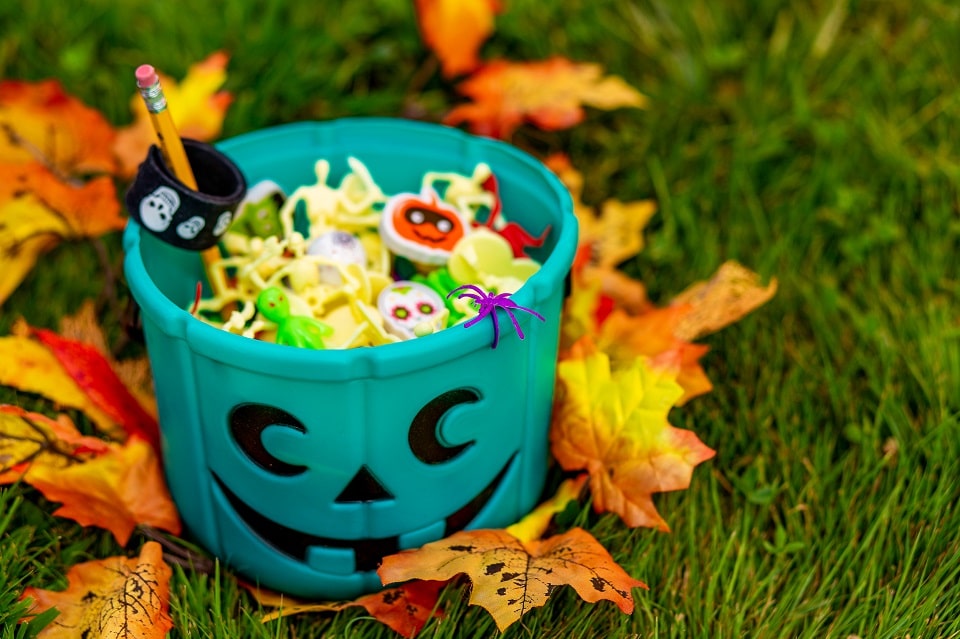
What are some ways we can talk to our kids about sugar consumption and encourage good decision making when adults aren’t around?
This is a great time to have a conversation with your kids about their choices — not just on Halloween, but the other 364 days also. Candy, cookies, chips and soda are delicious and fine in small amounts. However, our bodies prefer foods that keep it healthy and strong. So, if we have too much of the less healthful food, we don’t have room for the kind of food that builds us up and keeps us healthy. When a parent makes a rule about food, it’s best to get buy-in from the children by explaining the reasons. Parents aren’t limiting treats because we are mean, but because we care about our family’s health.
Remember to model that behavior yourself – kids see what you do!
How can we teach our kids to not feel left out if other kids have no boundaries around sugar?
Teach your children to be proud of the healthful choices they make. They don’t have to put down friends that make other choices; but rather than be envious of the sugary treats that their classmates have in their lunch boxes, be happy that they have “healthy body fuel” in their lunch. If they really want a piece of candy, they can probably have one at home after dinner when they can really enjoy it. Maybe mom and dad can indulge in one with them while they all talk about their day.
Thanks for all of the great ideas and info, Kimberly! And to our readers, we hope this gives you a road map to move with confidence through this sugar-fueled holiday. To learn more about nutrition and community outreach programs at Chester County Hospital, contact Kimberly Knipe, MBA, R.D., LDN at (610) 738-2300.
Chester County Hospital is located at 701 E. Marshall Street in West Chester, Pa.; phone: (610) 431-5000.
- Feature photo: Pexels
- Candy photo: Dish Works
- Jack o'lantern light photo: PicJumbo
- Halloween toys photo: Bigstock
